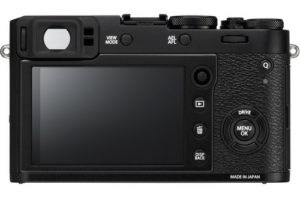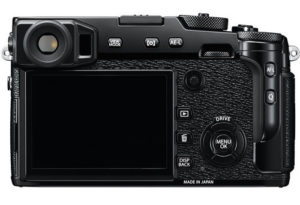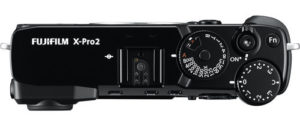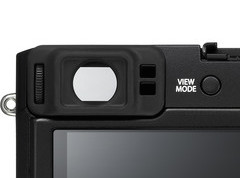When the Fujifilm X series was in its infancy, there were but two ranges to choose between: the fixed-lens X100 series of premium compacts and the interchangeable X-Pro series.
Since then, the X100 series has been upgraded three times (the X100S, X100T and most recently, the X100F), and the X-Pro1 was recently replaced by the X-Pro2 following a three-year gap. Despite one being a fixed lens premium compact and the other an interchangeable lens camera, these two models actually have much in common, from their vintage rangefinder design and 24MP X-Trans III APS-C sensor to their hybrid autofocus system and Full HD video capabilities. There are, however, a few ways in which they differ which we’ll be covering in the following comparison preview. Let’s get started!
Ethics statement: The information supplied in this article is based on the official specifications found on the Fujifilm website and our personal experience with X series cameras. If we get the chance to test the two cameras side-by-side, we will publish a full comparison. We were not asked to write anything about these cameras, nor were we provided any compensation of any kind. Within the article, there are affiliate links. If you decided to buy something after clicking the link, we will receive a small commission. To know more about our ethics, you can visit our full disclosure page. Thank you!
1. Fixed vs. interchangeable
There is no better way to start a comparison than by stating the obvious, which is in this case, the nature of the lens system.
The X100F features a fixed 23mm f/2 prime (35mm in 35mm terms) which hasn’t been updated since 2010 when the X100 series first came into existence. It is capable of impressive sharpness from f/2 at mid-to-long focus distances but the results can be somewhat soft at closer focus distances. To find out more about the lens’ performance, we invite you to visit our in-depth X100T vs XF 23mm f/2 comparison.
Despite being a fixed lens, it is possible to alter your field of view in a couple of ways.
One is to adapt the updated conversion lenses designed especially for the X100F: the WCL-X100 II wide-angle or TCL-X100 II tele. The former widens the field of view to 28mm (35mm equivalent), whereas the latter extends it to 50mm (35mm equivalent). Unlike the mark I versions of these converters, the X100F can automatically detect if they are attached and make the appropriate corrections to aberrations without the need to manually select the correction in the menu.
The other is to use the digital teleconverter function which digitally zooms in to 50mm or 75mm (35mm equivalent). This is achieved first by cropping the frame and then upscaling the image back to 24MP. However, be aware that this method will only produce a JPG file.
The X-Pro2 is an interchangeable lens camera that accepts any lens with the Fujinon X mount. Of course, the size and performance of your set-up will vary depending on the lens mounted. For example, some lenses have been designed to deliver excellent sharpness or a very shallow depth of field, whereas others are built for speed or work in difficult weather conditions thanks to their weather-sealing.
2. Size, weight and design
Although both cameras feature a rangefinder design with a hybrid electronic/optical viewfinder on the left side of the body, the X-Pro2 body is slightly larger and heavier than its fixed lens counterpart. This difference in size and weight increases once you mount a lens to the X-Pro2, so the only way to keep it nearly as compact as the X100F is to restrict yourself to small primes.

Interestingly, the buttons and dials on the two cameras are more or less identical. Both have a dual shutter speed/ISO dial, exposure compensation dial, hot shoe, AF toggle, and a similar array of buttons on the rear. The two main differences concern the AF mode switch, which is located on the side of the X100F / on the front of the X-Pro2, and the separate AEL, AFL and metering buttons on the X-Pro2.
They also share a fixed LCD screen that lacks touch sensitivity, though that of the X-Pro2 has a little more resolution (1.62 million vs. 1.04 million dots).
The X-Pro2 comes in black and graphite. The X100F is available in black and silver.
3. Weather-sealing
Those who often work in inclement weather conditions should be aware that the X100F is not at all weather-sealed. This makes sense as the addition of weather-sealing would have made the camera bulkier, thus compromising its compact nature.
The X-Pro2, on the other hand, is completely weather-sealed against dust, moisture and temperatures down to -10°C. It is most effective when combined with XF lenses that are also weather-sealed. (Our X-Pro2 and XF 100-400mm stood up to a hail storm and was none the worse for wear!)
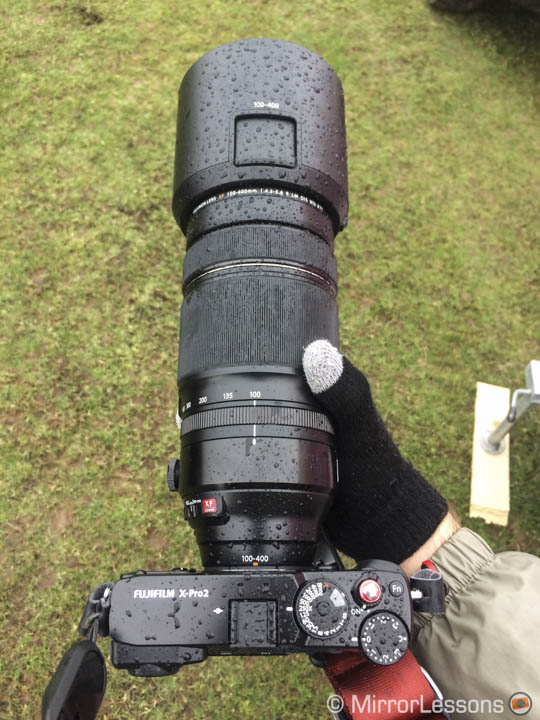
4. Hybrid viewfinder
Unique to the X100 and X-Pro series is the hybrid viewfinder located on the left-hand side of the body. The switch lever on the front lets you switch between optical (OVF) and electronic (EVF) options. Usefully, there is also an Electronic Rangefinder option which displays the EVF area in the bottom right corner of the OVF, letting you judge focus and exposure. In OVF mode, there is parallax correction for both the outline frame and focus point.
The optical viewfinder of both cameras is a Reverse Galilean type with 92% coverage of the field area and an electronic bright frame display. The electronic viewfinders, on the other hand, are slightly different. While both have a 0.48-inch, 2.36 million-dot LCD, the magnification is larger on the X100F (0.67x vs 0.59x) and the refresh rate is faster on the X-Pro2 (85fps vs 60fps).
5. Shutter mechanism
One of the bigger differences between the two Fujifilm cameras is the shutter mechanism. Specifically, while the X-Pro2 uses a standard focal plane shutter, the X100F employs a leaf shutter.
With a maximum mechanical shutter speed of 1/8000s, the X-Pro2 is twice as fast as the X100F whose maximum speed is 1/4000s. With the electronic shutter activated, both cameras are capable of speeds of up to 1/32000s.
Although the leaf shutter of the X100F is quieter and more discreet than the focal plane shutter of the X-Pro2, it can produce an strange looking bokeh if you shoot at 1/1000s or above with the fastest apertures of f/2 or f/2.8. This is because the leaf shutter cannot clear the image circle quickly enough. Trying to shoot beyond 1/1000s will also result in an improper exposure, though the camera will warn you of this by displaying the shutter speed in red.
6. Built-in ND filter
Because the X100F has a maximum mechanical shutter speed of only 1/1000s at f/2 and f/2.8, it is easy to overexposure your images in very bright sunlight at these values. To combat this, the X100F has been supplied with a 3-stop built-in ND filter, which reduces the exposure by an equivalent of 3EV.
The X-Pro2 doesn’t come with a built-in ND filter but this matters little as the camera can shoot at speeds as fast as 1/8000s with the mechanical shutter.
7. Flash
The X100F has a built-in flash while the X-Pro2 requires an external flash unit that attaches to the hot shoe such as the EF-X8. (Strangely, it isn’t included in the X-Pro2 kit even though the camera is compatible.) Both cameras are compatible with all the functions of the new EF-X500 unit.
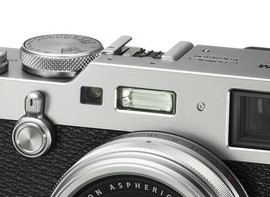
Since the X100F has a leaf shutter as mentioned above, it lets you sync flashes up to 1/1000s (at any aperture), 1/2000s (at f/4 and smaller) or 1/4000s (at f/8 and smaller). Even the slowest speed of 1/1000s is faster than the maximum sync speed of 1/250s on the X-Pro2. With the X-Pro2, you can have HSS with select flashes such as the EF-X500.
8. SD card slots
Dual SD card slots are now becoming commonplace on high-end mirrorless cameras and the X-Pro2 is no exception. The first slot is compatible with UHS-II standard cards and offers a faster writing speed, while the second is UHS-I compatible. You can have the camera switch over to the second slot once the first is full, or you can use it to back up your photos. There is also the option to record RAW files to one slot and JPGs to the other.
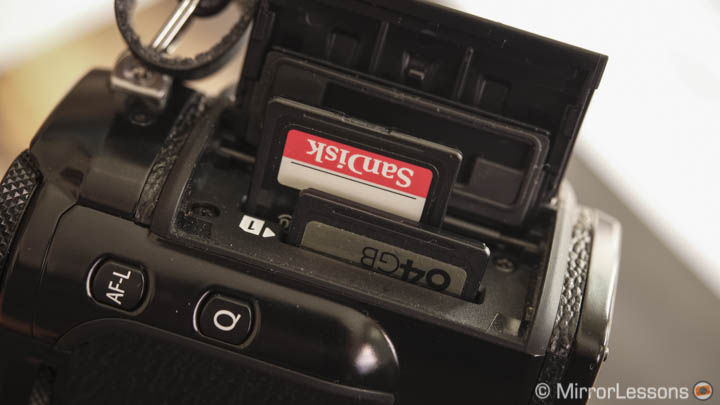
On the X100F, you’ll only find one UHS-I compatible SD card slot, which in our opinion is more than sufficient for a premium compact designed for street/documentary work.
9. Panorama mode
A smaller difference is that the X-Pro2 lacks the Motion Panorama mode of the X100F. Found inside the Drive menu, this mode stitches together a number of images as you pan to create a final high-resolution JPG. However, ghosting can occur if the camera doesn’t perform a perfect stitch.
10. Price
The final point worth mentioning is the difference in price between the two models. For the X-Pro2 body alone, you can expect to shell out around $1700, which is $400 more than the X100F. And considering that you will likely buy at least a couple of Fujinon lenses for the camera, your final investment can easily surpass $2000.
Conclusion
Despite the similarities mentioned in the introduction, the target markets of the Fujifilm X100F and X-Pro2 are somewhat different.
The X100F can be classified as a niche product which best suits genres that require speed and discretion such as street, documentary and event/wedding work. This is emphasised by Fujifilm’s choice to give it a 35mm equivalent lens – an ideal field of view for these genres. Due to its compact nature, it can also double as a handy travel camera as long as its native field of view and teleconverter options can satisfy your needs.
The X-Pro2, on the other hand, is a more versatile product thanks to its interchangeable mount. By attaching a small prime lens, you can transform it into a powerful yet discreet street or documentary camera, but it can work just as well for high-end sports and wildlife if you choose to mount a weatherproof tele-zoom. For advanced amateurs or professionals who engage in a wide variety of photographic genres, there is no question that the X-Pro2 will give you more satisfaction in the long run, even if it requires a larger initial investment.
Check price of Fujifilm X100F on
Amazon | Amazon UK | eBay | B&H Photo
Check price of Fujifilm X-Pro2 on
Amazon | Amazon UK | eBay | B&H Photo



